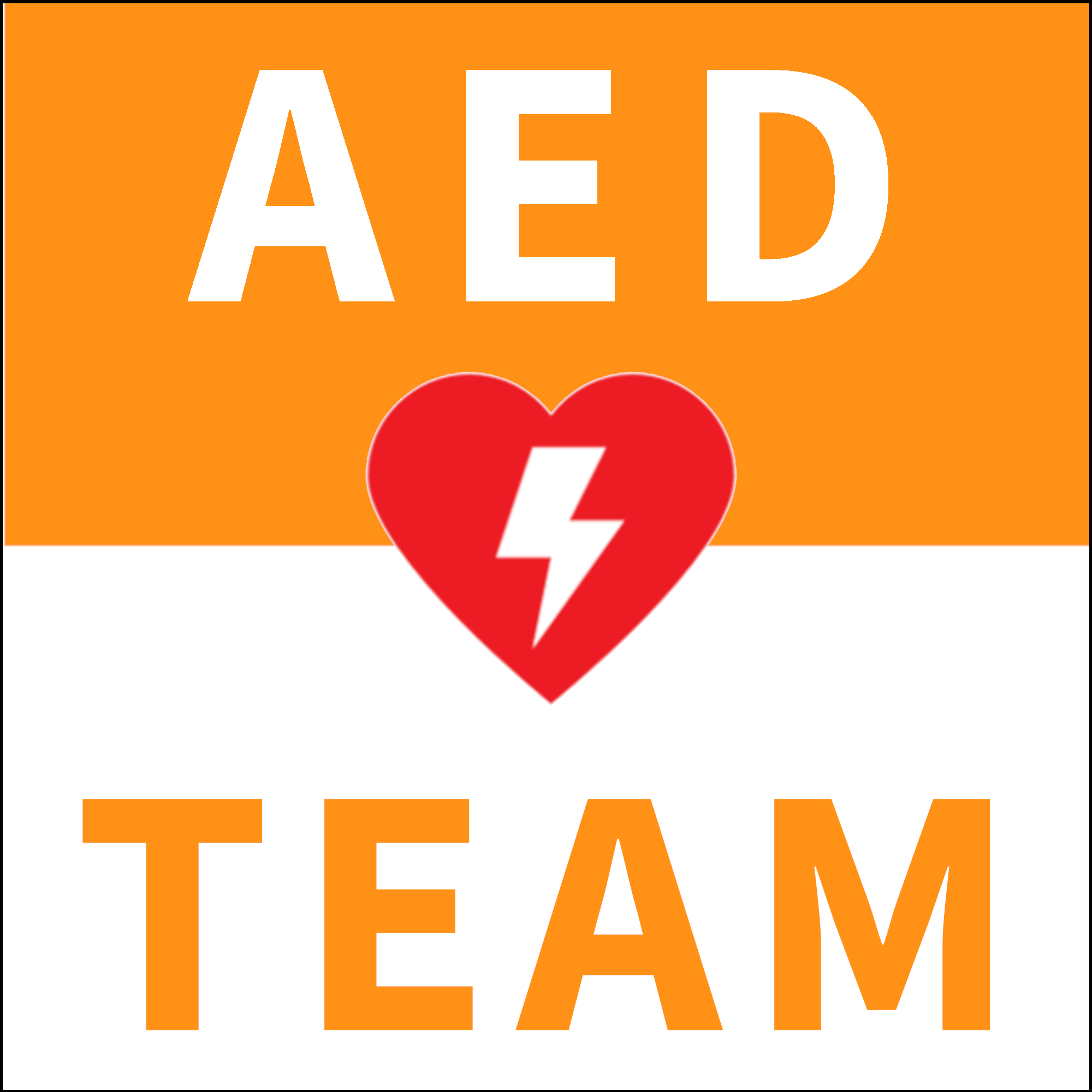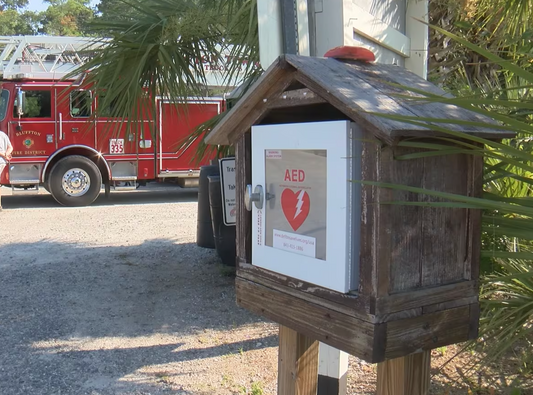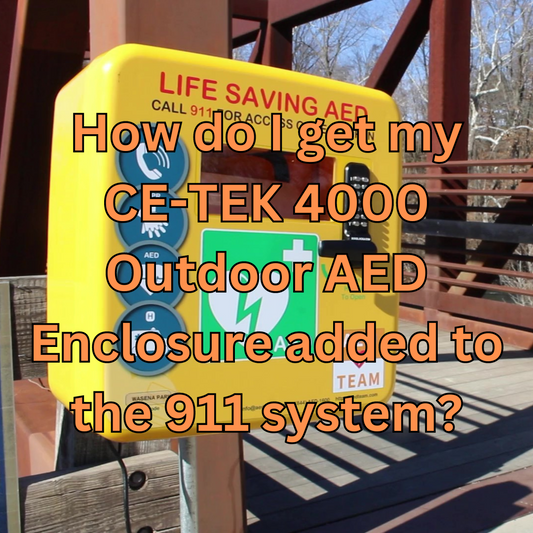When I work with a prospective client to determine Automated External Defibrillator (AED) placement, visibility is always a primary objective. Having been intimately involved in the planning and implementation of Public Access Defibrillation projects over the last 20 years, I know that the ability for a bystander-turned-rescuer to immediately locate and retrieve an AED has a profound impact on time-to-shock and therefore, cardiac arrest survivability.
My colleague and friend, Greg Page, is an advocate on this very topic and presented “Can Going Yellow Save More Lives?” at the 2023 Cardiac Arrest Survival Summit in San Diego. While Greg initially gained fame as the original Yellow Wiggle, he is a cardiac arrest survivor and has since become an AED advocate and the founder of the Australian nonprofit, Heart of the Nation.
Greg’s presentation raised a number of important points around AED visibility. If signage for Automated External Defibrillators is present, the colors and symbols are often extremely varied, and this lack of uniformity could affect the likelihood of whether an AED can be identified and used in a cardiac arrest. Signage must be clearly visible and universally understood to eliminate confusion.
In the United States, AED units are typically marked with a white sign containing a heart and lightning bolt symbol. In many countries outside the US, a green sign containing a white heart with a green zig-zag arrow and a white cross in the top right corner identifies the presence of an AED. Interestingly, the green signage was established as the designated AED standard by the International Organization for Standardization (ISO), however, there is still no single identifying sign used for an AED internationally.

Green AED signs blend in with other “safe condition” signage making them difficult to recognize. Signage for electrical and utility boxes signs is usually colored green. Color psychology also associates the color green with peace and calmness. For these reasons, the ISO green sign does not gather the attention and high-visibility needed for effective AED signage.
The color red, while associated with increased alertness and attention, is almost universally associated with fire equipment and therefore not ideal for AED equipment.

Yellow, on the other hand, is an underutilized color which attracts attention and is also highly visible from a distance. The Heart of the Nation conducted a study with over 2,000 participants using a net promoter (ranked) score for AED sign consumer color preference. This found that 73% of participants preferred yellow and red signage compared to the standard green ISO sign for AED designation. An overwhelming 88% of participants identified yellow as the preferred color for an AED enclosure.

Photo courtesy of: Heart of the Nation, Australia
When considering standardized signage for an AED, the most desirable elements include:
- Maximizing comprehensibility so unfamiliar bystanders can quickly identify that the sign indicates the presence of an AED
- Making the sign clearly visible and identifiable from a distance and in various environments
- Ensuring that the sign is not similar to other signs that may lead to confusion about the sign’s meaning or the location being denoted
- Highly visible and attracts the attention of the public to the sign at times other than when it is needed
- Featuring designs, colors, and placements that are easily recalled when having seen the sign just a few times
- Utilizing colors that have been associated with increased alertness and memory retention (red and yellow) and not lower alertness (green and white)
- Empowering the lay person to use the AED
Heart of the Nation has an online game that really drives home the importance of the above elements. Similar to the children’s book "Where’s Waldo?," the activity shows participants a photo of a busy scene and times their ability to locate and click on where the AED is located. Anecdotally, when I played the game, I too realized that I was able to locate yellow AED signs much faster and easier than other colors. I also found it much easier to look for the same sign on repeat rather than having to locate the AED using a different style sign.
Real World Application
Rapid AED identification is something I do personally whenever I’m in a new place. My wife, kids, and I challenge each other to find the AED first. Identifying where a venue has placed their AED and the number of devices that are available can be a surprising discovery. I do my best to contact the AED program manager or other personnel at the building whenever I note a problem.
During a recent visit to a sold-out 20,000 seat civic center for a basketball game my family and I found only one wall-mounted AED signage in the entire building. The small red/white sign indicated the AED was behind a locked first aid room. Locating only a single device (which likely has no backup set of pads) in such a large building could significantly delay use of the AED due to the amount of time it can take to locate the AED and also carry it a long distance, potentially through crowds.
A trip to the local aquarium had similar red and white signage for their AED, but the device was also located behind a badge access locked door not accessible to the public. We've seen this practice in a number of places likely due to the false perception that allowing the public to have access to emergency equipment increases the risk of tamper, theft, or liability. As we know, minutes count when it comes to sudden cardiac arrest response and searching for a badged staffer can lead to a loss of precious time.

Traveling through Boston’s Logan Airport and Chicago’s O’Hare Airport which have numerous AED units located throughout the concourse, I noted very different signage to indicate the location of AEDs. Logan uses a lime green sign (a unique color) with a very small red heart for their AED units. O’Hare has large overhead red and white AED signage with a blue trim that matches the details of the airport plus markings on the floor to keep the area in front of the AED clear allowing for faster access. Chicago’s Aviation Department claims to have introduced the first Public Access to Defibrillation worldwide.


Universal Studios in Orlando, FL uses an even larger variety of signage. While AED units were placed in many public settings throughout the park, signage for the devices was created to intentionally blend into the theme of the attraction. While the signs were large in size, they lacked any standardization and used varying colors that could make them difficult to quickly identify in an emergency situation.

Greg’s presentation at the CCPRF summit rang true in a number of ways. Investing in the cost and maintenance of placing an AED in a public setting to only have that AED not be effectively deployed due to rescuer delay in identifying it would be a tragedy. I agree with Greg’s suggestion that universally identifiable AED signage is needed, and that there is good evidence to support that the color yellow should be used everywhere for this signage since it enhances attention and makes the sign easier to identify.
AED TEAM is pleased to announce our commitment to provide yellow AED signage at no cost for any new sales, and offer the signage at-cost to any previous clients. We believe that Greg’s assessment on signage is backed by scientific evidence and we hope to do our part in improving the public’s ability to locate AED units in an emergency.




